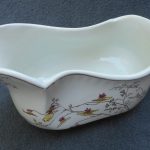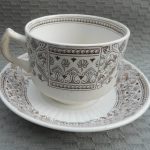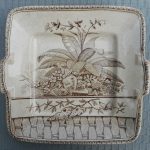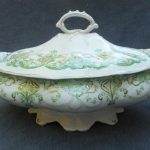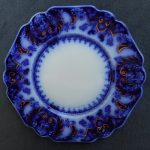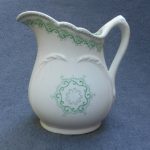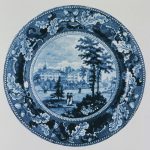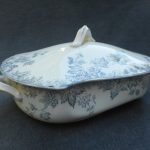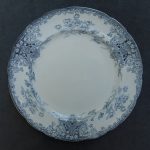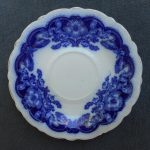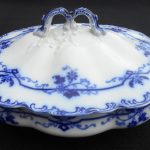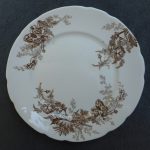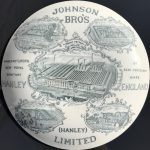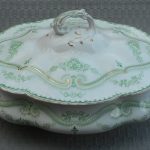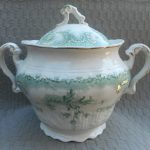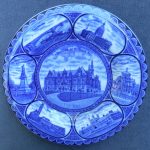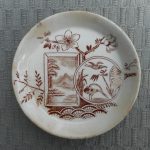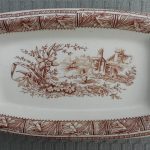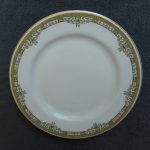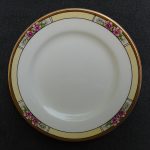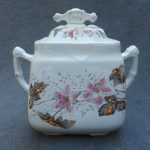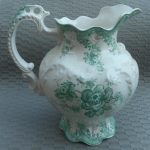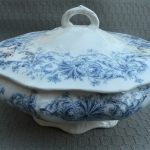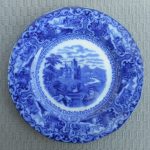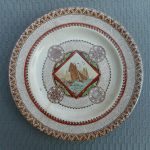c. 1880 – c. 1914
The history of British pottery made for the American market dates back more than 250 years, predating the American Revolution. It was significantly expanded, however, in the years following the Civil War. With the growth of cities and the emergence of a prosperous urban middle class, British pottery became a status symbol reflecting the values of the Gilded Age. Popular styles included the Japanese-inspired Aesthetic movement, innovative asymmetrical shapes, intricate molds and decorations, and the use of cobalt oxide to create “flow blue” patterns.
Gallery of Images
All patterns are by Johnson Brothers unless another company name is given in parentheses. Click on an image to see an enlarged view.
- 131486, c. 1889
- Alton, c. 1884 (Adderley)
- America, c. 1886 (Booth)
- Brazil, c. 1880 (Turner)
- Columbia, c. 1889-93
- Dartmouth, c. 1890
- Edgvale, c. 1899
- Florida, c. 1890
- Franklin, c. 1909
- Harvard College, c. 1823 (Stevenson)
- Hop, c. 1889
- Malta, c. 1886 (Grindley)
- Mongolia, c. 1890
- Nancy, c. 1902 (Grimwades)
- Oregon, c. 1890
- Oxford, c. 1890
- Paris, c. 1890-1905
- Queen Victoria Jubilee Backstamp, 1897
- Regis, c. 1890
- Rolland, c. 1890
- Savannah, c. 1890
- Souvenir of St. Louis, c. 1904 (Rowland & Marcellus)
- Untitled Aesthetic Pattern, c. 1855-60 (Minton)
- Untitled Aesthetic Pattern, c. 1881 (No Maker)
- Untitled Art Nouveau Pattern, c. 1900
- Untitled Pattern, c. 1902 (Meakin)
- Untitled Royal Ironstone Pattern, c. 1883 (Johnson Brothers, Late Pankhurst)
- Vienna, c. 1898
- Waldorf, c. 1895
- Watteau, c. 1910 (L. Straus)
- Wisconsin (Brownfield)
